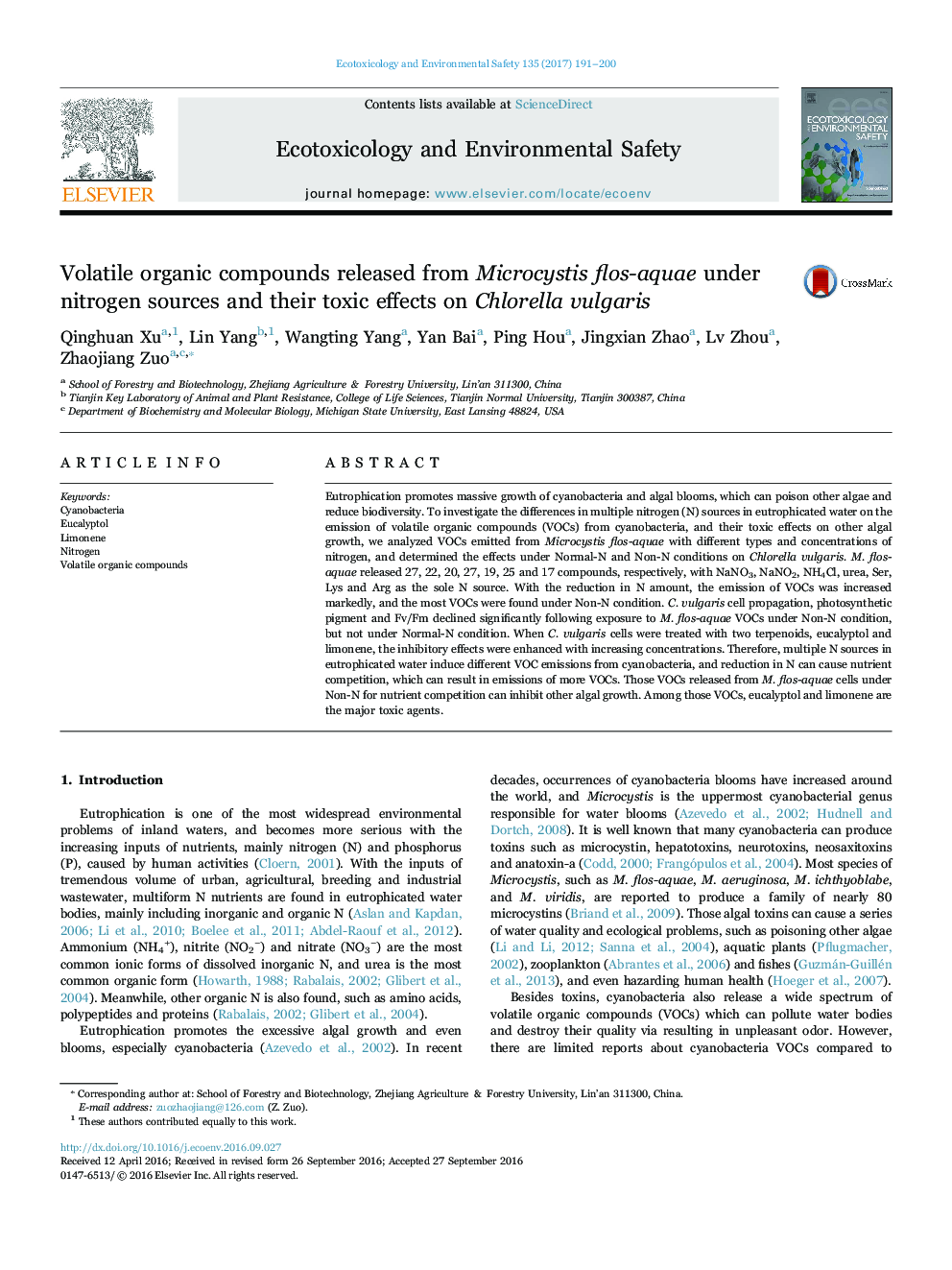| Article ID | Journal | Published Year | Pages | File Type |
|---|---|---|---|---|
| 4418977 | Ecotoxicology and Environmental Safety | 2017 | 10 Pages |
•Microcystis flos-aquae released different VOCs under different N sources.•Non- and Low-N increased VOC emission from algae due to nutrient competition.•C. vulgaris growth was inhibited markedly by VOCs from Non-N condition.•Eucalyptol and limonene were 2 major VOCs released from algae.
Eutrophication promotes massive growth of cyanobacteria and algal blooms, which can poison other algae and reduce biodiversity. To investigate the differences in multiple nitrogen (N) sources in eutrophicated water on the emission of volatile organic compounds (VOCs) from cyanobacteria, and their toxic effects on other algal growth, we analyzed VOCs emitted from Microcystis flos-aquae with different types and concentrations of nitrogen, and determined the effects under Normal-N and Non-N conditions on Chlorella vulgaris. M. flos-aquae released 27, 22, 20, 27, 19, 25 and 17 compounds, respectively, with NaNO3, NaNO2, NH4Cl, urea, Ser, Lys and Arg as the sole N source. With the reduction in N amount, the emission of VOCs was increased markedly, and the most VOCs were found under Non-N condition. C. vulgaris cell propagation, photosynthetic pigment and Fv/Fm declined significantly following exposure to M. flos-aquae VOCs under Non-N condition, but not under Normal-N condition. When C. vulgaris cells were treated with two terpenoids, eucalyptol and limonene, the inhibitory effects were enhanced with increasing concentrations. Therefore, multiple N sources in eutrophicated water induce different VOC emissions from cyanobacteria, and reduction in N can cause nutrient competition, which can result in emissions of more VOCs. Those VOCs released from M. flos-aquae cells under Non-N for nutrient competition can inhibit other algal growth. Among those VOCs, eucalyptol and limonene are the major toxic agents.
